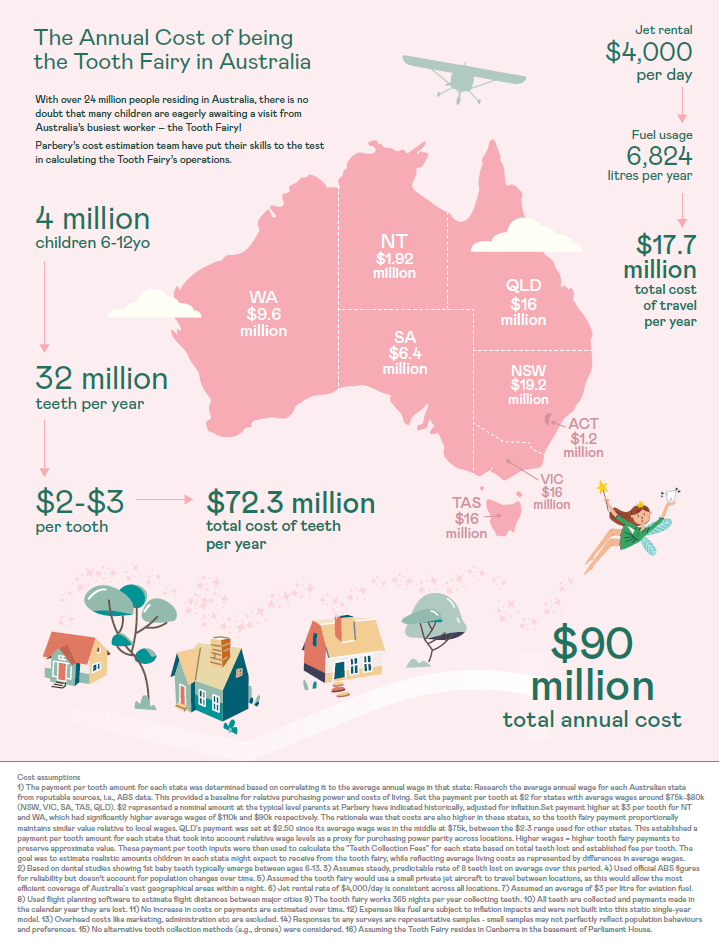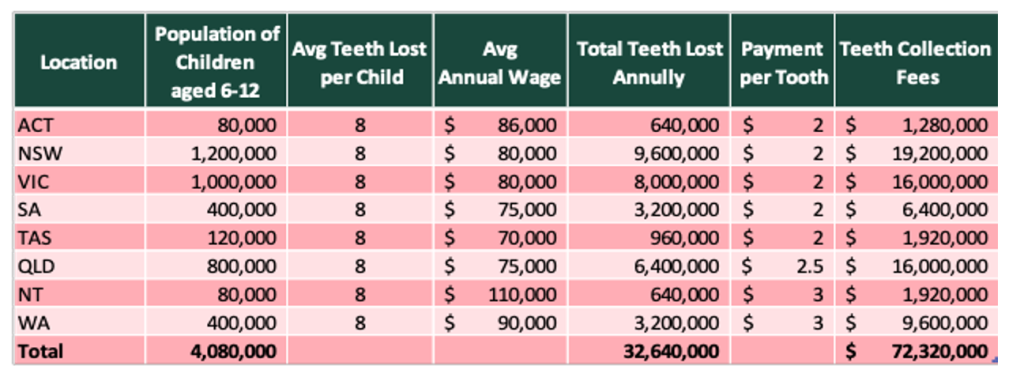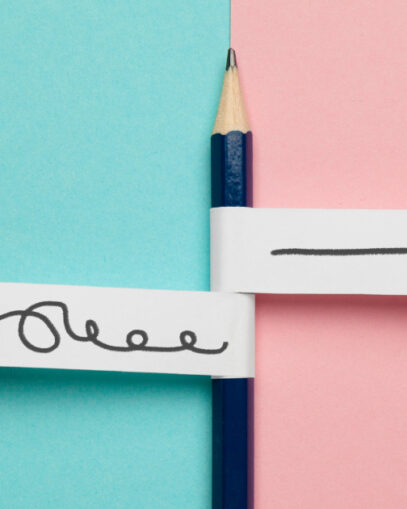Estimating the Cost of Being the Tooth Fairy in Australia

As a professional Cost/Financial Modeller, I normally enjoy applying my skills to cost Defence capabilities, however my latest financial modelling challenge was to estimate the annual expense of being one of Australia’s busiest worker – the Tooth Fairy!
With over 24 million people residing in Australia, there are no doubt many children eagerly awaiting visits from the tooth fairy each night. To properly estimate the costs involved, I first needed to gather key data points about childhood dental development and regional economic factors.
Assuming each child loses on average of 8 teeth between the ages of 6-12 years with approximately 4 million Australian children in this age bracket, it means the tooth fairy collects an estimated 32 million teeth annually!
It was important to consider the logistical cost associated with visiting children across Australia’s vast land mass and diverse regions. To comprehensively calculate tooth fairy operational expenses, I looked at costs across the states and territories to lease and fuel a small jet aircraft. As for the customary coins or notes left behind in exchange for each lost tooth, I surveyed our Parbery Parents to see what amounts the tooth fairy has been leaving and the general consensus was between $2-$3 per tooth.
Multiplying the average number teeth lost per child by the number of tooth loosing children in each region and factoring in estimated travel costs plus tooth fees, here are the overall projected annual costs:
- ACT: $1.3 million AUD
- NSW: $20.8 million AUD
- VIC: $17.9 million AUD
- SA: $8.3 million AUD
- TAS: $4.2 million AUD
- QLD: $19.7 million AUD
- NT: $5.1 million AUD
- WA: $12.7 million AUD
In total, fulfilling the tooth fairy’s duties across Australia is estimated to cost around $90 million dollars annually. While just a thought experiment, it shows the considerable financial obligations of such an important childhood tradition! Of course, benefits like creating smiles and dreams far outweigh monetary costs.
Disclaimer:
As always, assumptions and variables in any cost estimate can be refined further. But this exercise demonstrates how to comprehensively tackle hypothetical scenarios through meticulous data analysis. The tooth fairy’s role in inspiring Australian children remains priceless.
Annual Cost of Being a Tooth Fairy Infographic -Click here to see the enlarged version of the infographic.
Assumptions:
- The payment per tooth amount for each state was determined based on correlating it to the average annual wage in that state:
- Research the average annual wage for each Australian state from reputable sources, i.e., ABS data. This provided a baseline for relative purchasing power and costs of living.
- Set the payment per tooth at $2 for states with average wages around $75k-$80k (NSW, VIC, SA, TAS, QLD). $2 represented a nominal amount at the typical level parents at Parbery have indicated historically, adjusted for inflation.
- Set payment higher at $3 per tooth for NT and WA, which had significantly higher average wages of $110k and $90k respectively. The rationale was that costs are also higher in these states, so the tooth fairy payment proportionally maintains similar value relative to local wages.
- QLD’s payment was set at $2.50 since its average wage was in the middle at $75k, between the $2-3 range used for other states.
- This established a payment per tooth amount for each state that took into account relative wage levels as a proxy for purchasing power parity across locations. Higher wages = higher tooth fairy payments to preserve approximate value.
- These payment per tooth inputs were then used to calculate the “Teeth Collection Fees” for each state based on total teeth lost and established fee per tooth.
- The goal was to estimate realistic amounts children in each state might expect to receive from the tooth fairy, while reflecting average living costs as represented by differences in average wages.
- Based on dental studies showing 1st baby teeth typically emerge between ages 6-12.
- Assumes steady, predictable rate of 8 teeth lost on average over this period.
- Used official ABS figures for reliability but doesn’t account for population changes over time.
- Assumed the tooth fairy would use a small private jet aircraft to travel between locations, as this would allow the most efficient coverage of Australia’s vast geographical areas within a night.
- Jet rental rate of $4,000/day is consistent across all locations.
- Assumed an average of $3 per litre for aviation fuel.
- Used flight planning software to estimate flight distances between major cities
- The tooth fairy works 365 nights per year collecting teeth.
- All teeth are collected and payments made in the calendar year they are lost.
- No increase in costs or payments are estimated over time.
- Expenses like fuel are subject to inflation impacts and were not built into this static single-year model.
- Overhead costs like marketing, administration etc are excluded.
- Responses to any surveys are representative samples – small samples may not perfectly reflect population behaviours and preferences.
- No alternative tooth collection methods (e.g., drones) were considered.
- Assuming the Tooth Fairy resides in Canberra in the basement of Parliament House.
Methodology and Calculations by State:
Teeth Collection Fees:
Travel Costs:
Assuming the Tooth Fairy resides in Canberra in the basement of Parliament House.





